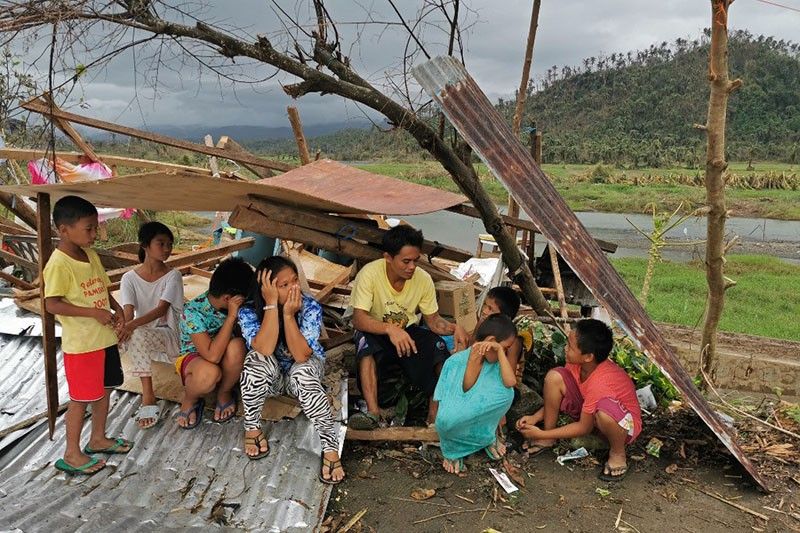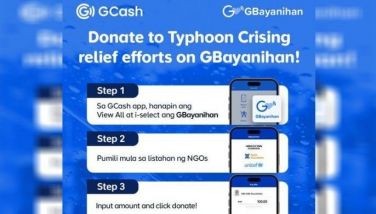Keeping the lights on during a disaster

It isn’t easy to imagine how our days would go if we didn’t have access to electricity. This is especially true over the last two years, with COVID-19 keeping us indoors, working from home on our computers, staying in touch through messaging apps on our phones, and keeping up with developments through social media on our tablets.
Without electricity, we’d probably run the batteries out on our gadgets within the first 24 hours and find ourselves unable to work, unable to communicate with the outside world, and unaware of important announcements or developments happening around us.
This situation isn’t imaginary for millions of Filipinos living in areas worst hit by Typhoon Odette late last year. In several of these areas, power has still not been restored until today. According to National Electrification Administration (NEA), as of a week ago, 1.14 million households in Visayas and Mindanao were still without power.
When typhoon Odette made landfall, it brought with it strong winds with speeds up to 220 kilometers per hour, which toppled power transmission towers and distribution poles in multiple provinces. To illustrate the extent of the damage to energy infrastructure, according to the NEA, the cost of damages incurred by electric cooperatives has reached P2.5 billion, and this figure doesn’t even include damages incurred by private Distribution Utilities or the National Grid Corp.
In the immediate aftermath of the typhoon, the loss of power in these hard-hit areas meant those affected by the typhoon and first responders alike faced communication and coordination challenges. More than that, however, this also meant that over a hundred water pumping districts that relied on power from distribution utilities were also down, creating water, sanitation, and hygiene challenges.
The blackouts also presented a critical challenge for vital public health institutions such as hospitals and vaccine storage centers that both need continuous power to keep life-saving machines running and vaccines refrigerated.
However, the lack of power is also hampering these areas from kicking off the economic recovery process in the longer term. With over a million households still without electricity, work-from-homers are unable to return to work, students cannot return to their online classes, and many businesses cannot fully operate.
Having a reliable energy sector is essential to economic and social activities. So, with extreme weather events on the rise, it’s time that we start talking more about building a climate-resilient energy sector.
According to the International Energy Agency (IEA), climate resilience is the ability to anticipate, absorb, accommodate and recover from the effects of a potentially hazardous event related to climate change. A climate-resilient energy sector can adapt to and withstand the long-term changes in climate patterns and continue to operate under the immediate shocks from extreme weather events, and restore the system’s function after an interruption resulting from climate hazards.
Having a climate-resilient energy sector should be a top-of-mind issue for us here in the Philippines, especially since our country is one of the most exposed and vulnerable in the world to extreme weather events. According to the Global Climate Risk Index (CRI) 2021, we ranked 17th out of 180 countries in exposure and vulnerability.
According to the Asian Development Bank’s (ADB) new energy policy, several things can be done to make the energy sector climate-resilient. For instance, strategies and approaches, such as conducting vulnerability assessments, use of multiple scenarios for extreme climate and geophysical events, preparation of emergency and recovery plans, use of smart grids, climate-proofing of infrastructure, diversification of and distribution of energy systems, are all important for improving power system resilience, the ADB said.
Furthermore, the new policy also says that the cost of these approaches should be seen as a ”resilience investment,” citing the burying distribution and transmission lines underground as a “no regrets” investment.
Burying distribution lines makes sense; 220 kph winds can’t blow over what is already underground. However, the reality is that buried lines are several times more expensive than overhead ones. In the same way, the cost of 100% climate proofing the entire energy sector would also be economically unaffordable, especially for private sector players and their customers.
So, while new approaches and advanced technologies can help make the energy sector 100% climate-resilient, the value of climate-proofing still needs to be weighed against other options to establish priorities.
In the case of the Philippines, perhaps one argument for climate-proofing our energy sector is that with our economy’s dependence on reliable power and the frequent occurrence of extreme weather events in the country, the cost of climate-proofing is outweighed by the economic benefits of a climate-resilient economy.
This argument, however, should be appreciated best by those whose job it is to achieve maximum economic growth for the country, our government.
Hence, our government, specifically our energy regulators, should implement policies that enable energy sector players, especially the electric cooperatives in regions like Visayas and Mindanao, to develop climate-resilient energy systems. Only through a combination of government-led energy sector policy change, risk assessment, financing, private sector engagement, and knowledge management will these regions be able to climate-proof critical energy infrastructure and quickly restore services when disaster does hit.
Typhoons will continue to hit the country; it’s up to us to adapt and reduce the negative impact that climate change and disasters have on us, our critical sectors, and the economy.
Paco Pangalangan is the executive director of think tank Stratbase ADR Institute.
- Latest




















